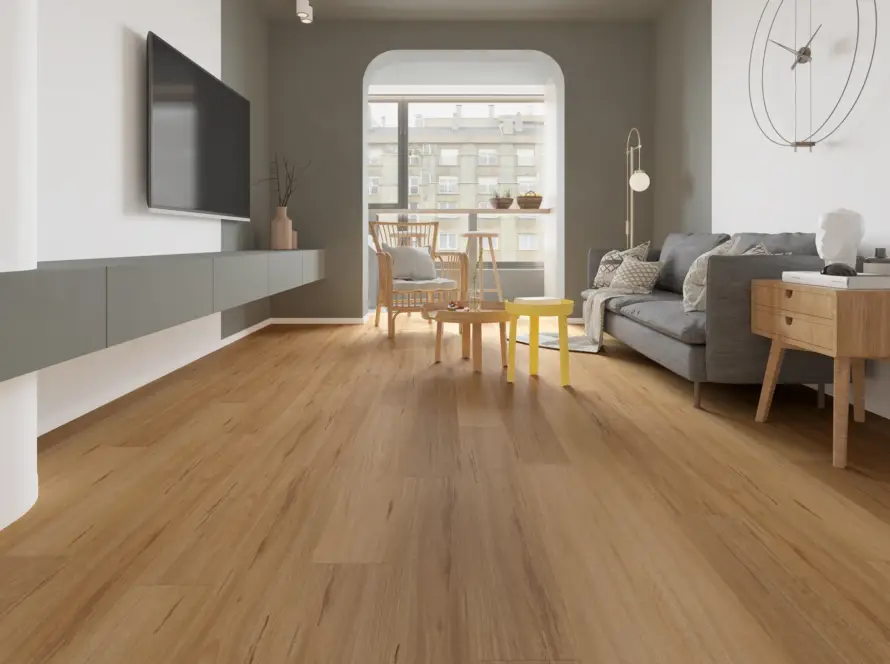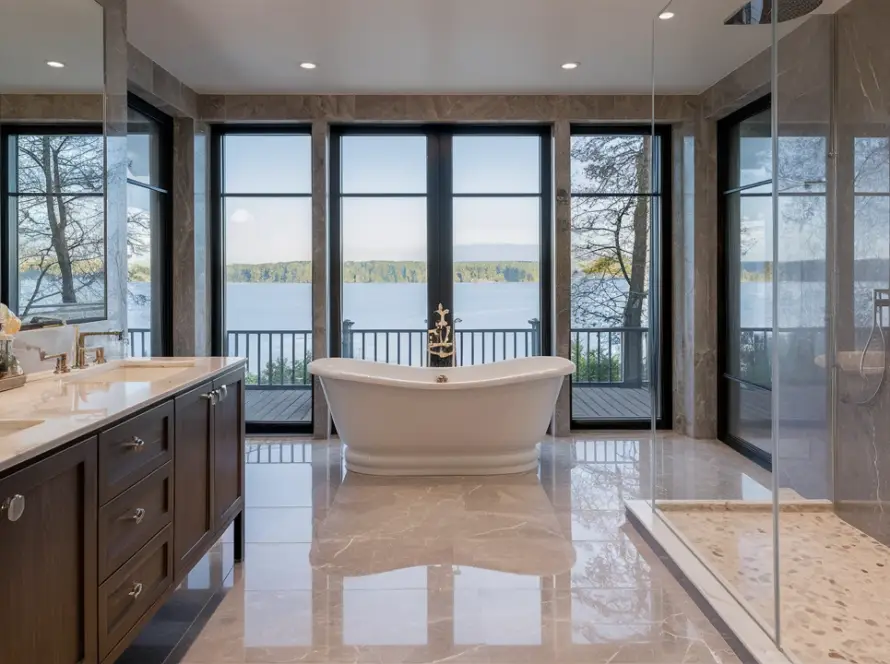MgO Core and Flooring Structure
MgO flooring (Magnesium Oxide Flooring), also known as magnesium oxychloride flooring, is a new type of inorganic composite flooring made from a ternary system of magnesium oxide (MgO), magnesium chloride (MgCl₂), and water through modification processes.
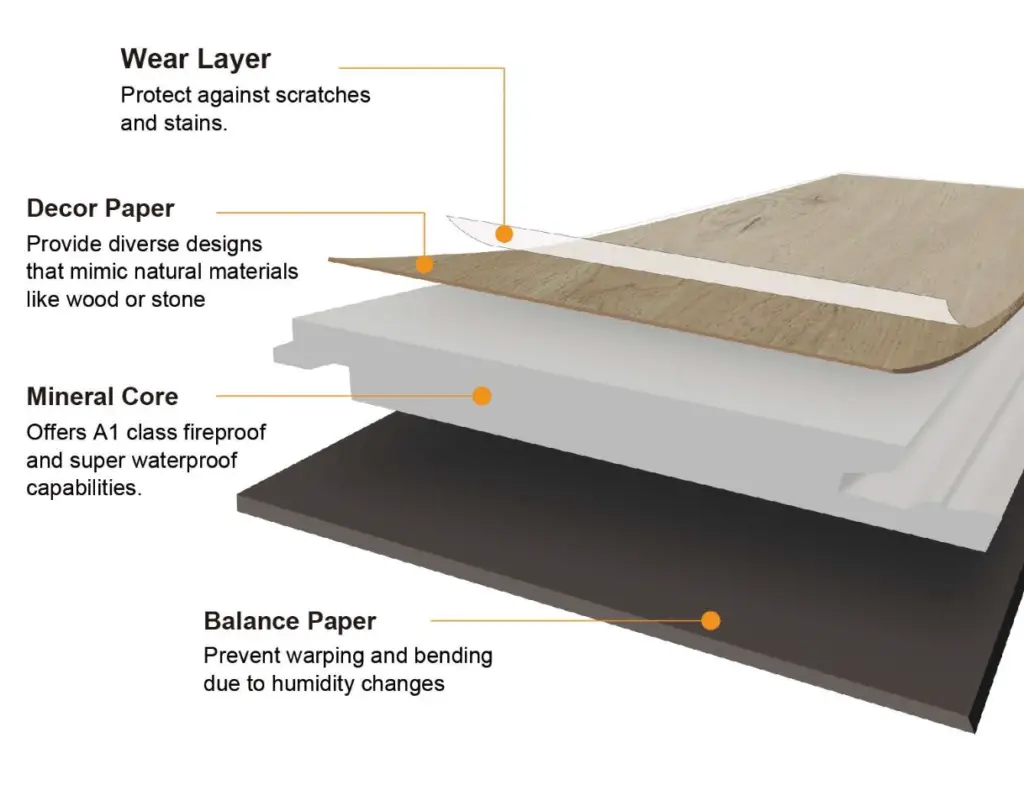
Its core structure typically consists of four layers: wear-resistant layer, decorative layer, MgO core layer, balance paper layer and backing layer. The unique formulation of the MgO core layer provides the following properties:
- Exceptional Fire Resistance: MgO’s fire rating reaches China’s GB8624 A2 standard (non-combustible) or European EN13501-1 A2fl classification, exceeding the B1 rating (flame-retardant) of conventional flooring.
- Ultra-High Stability: The MgO substrate has an extremely low thermal expansion/shrinkage rate. This makes it ideal for underfloor heating systems, offering superior thermal conductivity compared to solid wood and no deformation over time.
- Eco-Friendly and Non-Toxic: No adhesives are added during production. Almost no formaldehyde emissions, surpassing China’s strictest ENF standard, and it contains no PVC, heavy metals, or volatile organic compounds (TVOC).
- Multifunctionality: The MgO substrate integrates waterproofing, mold/antibacterial resistance, and sound absorption, making it suitable for high-humidity or high-sanitation environments like kitchens, hospitals, and ships.
Evolution and Comparison of Fire-resistant Flooring
As building safety standards rise, fire-resistant flooring has evolved from traditional wood to composite materials. Current mainstream products include SPC pisos, MFC flooring, HPL flooring, and MgO flooring, with performance comparisons as follows:
| Property | SPC Flooring | MFC Flooring | HPL Flooring | MgO Flooring |
|---|---|---|---|---|
| Core Material | Stone powder + PVC resin | Wood fiber + minerals | High-pressure laminate resin | MgO + MgCl₂ + glass/wood fiber |
| Fire Rating (China Standard GB8624) | B1 (Flame-retardant) | B1 | B1 | A2 (Non-combustible) |
| Eco-Friendliness | Formaldehyde-free, contains PVC | Formaldehyde-free, chemical additives possible | Formaldehyde risk | Low formaldehyde, inorganic |
| Stability | Moisture-resistant but deforms at high temps | Moisture-resistant, moderate heat resistance | Heat-resistant but prone to moisture expansion | Temperature/humidity stable, all-scenario use |
| Comfort & Soundproofing | Hard surface, moderate soundproofing | Wood-like feel, better soundproofing | Hard, poor soundproofing | Resilient backing layer, superior sound absorption |
| Applications | Homes, commercial spaces, bathroom | Homes, light commercial | High-intensity industrial settings | Hospitals, schools, underfloor heating, ships |
Key Differentiators:
- Fire Safety: MgO’s A2 rating surpasses B1 materials, delaying fire spread without toxic smoke.
- Underfloor Heating: MgO’s thermal stability outperforms SPC, with no deformation under prolonged heat.
- Production Cost: MgO’s crystallization process poses challenges (e.g., bubbles/cracks), resulting in higher costs than SPC.
Global Fire Rating Standards
Fire resistance requirements vary by region. MgO flooring meets high international standards due to its inorganic substrate:
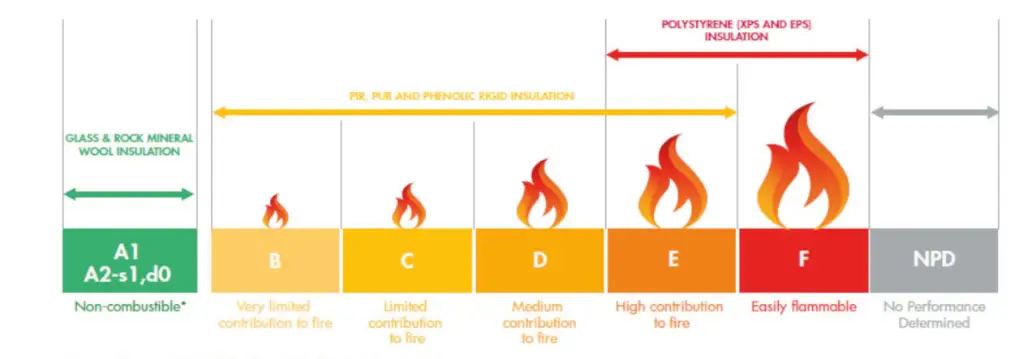
- China GB Standard (GB8624)
- Class A: Non-combustible (e.g., MgO)
- B1: Flame-retardant (e.g., SPC, MFC)
- B2: Combustible (e.g., engineered wood)
- B3: Flammable
- European EN Standard (EN13501-1)
- A1fl/A2fl: Non-combustible (MgO achieves this)
- Bfl-Cfl: Flame-retardant to combustible (SPC achieves Bf1)
- Dfl-Efl: Low flame resistance
- US ASTM Standard
- Class A: Flame spread index ≤25 (equivalent to A2)
- Class B: Index 26-75 (common for SPC)
MgO flooring, certified to China GB8624 A2 and Europe EN13501-1 A2fl, is the top choice for school, hospitals, and public spaces.
MgO’s Environmental Edge vs. Recycled Electronic Waste Substrates
Traditional fire-resistant flooring often uses substrates with recycled electronic waste (e.g., PCB fragments), which pose risks:
- Production Pollution: Recycling requires smelting/acid washing, releasing dioxins and lead.
- Health Hazards: Residual heavy metals (lead, cadmium) may leach into air or via contact.
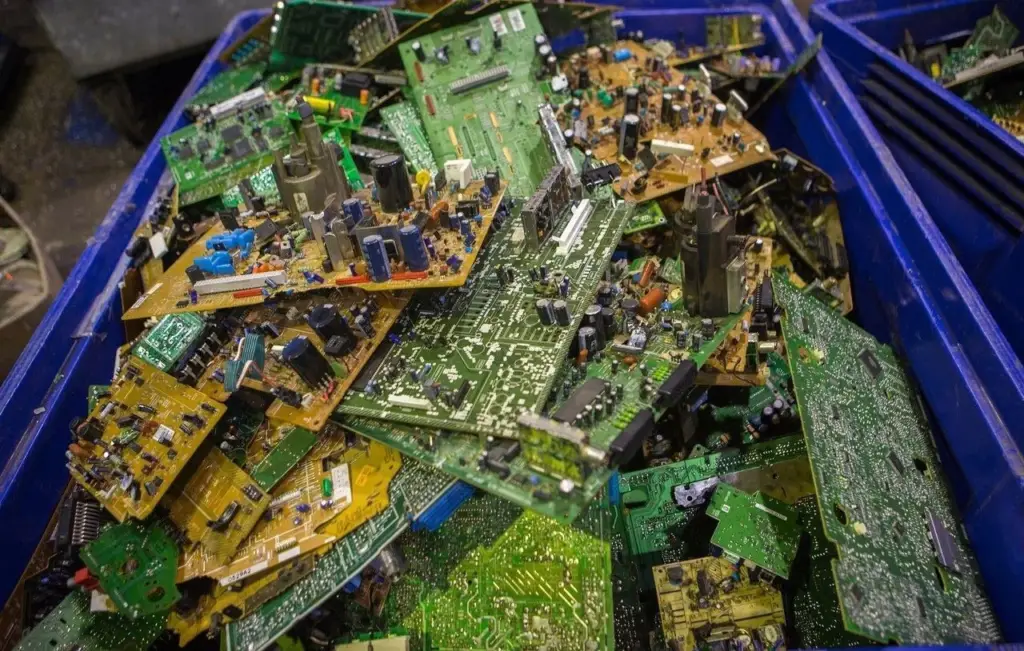
MgO Innovations:
- Pure Raw Materials: Natural MgO minerals replace recycled waste, eliminating pollution at the source.
- Low-Carbon Process: MgO production consumes 60% less energy than cement-based alternatives, with zero greenhouse gas emissions during curing.
- Circular Economy: Discarded MgO boards can be crushed and reused in construction, ensuring full lifecycle sustainability.
Conclusión
MgO flooring not only redefines fire-resistant performance benchmarks but also drives the industry toward sustainability with its inorganic, eco-friendly DNA. From fire compliance in public buildings to health demands in homes, MgO delivers safe, aesthetic solutions in flooring materials.


